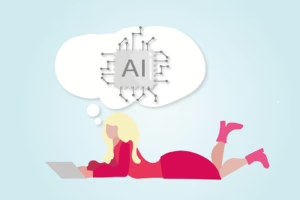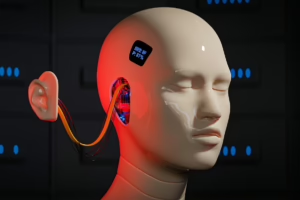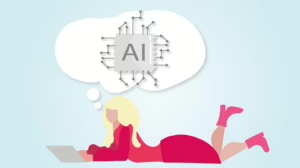AI isn’t the future. It’s the present. And it belongs to those who dare to understand and use it. Are you passionate about AI or simply …
What’s ChatGPT and OpenAI: ChatGPT Signup and Demo of GPT-4 Superpowers
Introduction to ChatGPT and OpenAI
OpenAI, a prominent artificial intelligence research organization, has revolutionized the way we interact with machines through its versatile language model, ChatGPT. Initially launched in 2020, ChatGPT has undergone several iterations, with the latest being the fourth version, GPT-4, launched in 2023. This cutting-edge technology represents a significant leap in natural language processing, allowing users to communicate with AI in a seamless and intuitive manner.
ChatGPT serves various purposes, from brainstorming ideas and answering questions to aiding educational endeavors and facilitating creative writing. Its ability to generate human-like text has made it a valuable tool across multiple sectors, including business, education, customer support, and entertainment.
Understanding ChatGPT
1. What is ChatGPT?
ChatGPT is an AI language model developed by OpenAI that employs machine learning techniques to generate text in a conversational format. It’s built upon the foundation of the Generative Pre-trained Transformer (GPT) architecture, where it learns from a vast amount of text data to understand and predict human language effectively. Primarily designed for interactive applications, ChatGPT is capable of answering questions, providing recommendations, and engaging in meaningful dialogue.
2. Core Features of ChatGPT
- Natural Language Understanding: ChatGPT excels in understanding and generating human-like text, making interactions more conversational.
- Contextual Awareness: The model can maintain context across multiple exchanges, allowing for more coherent discussions over time.
- Versatility: It can perform a wide range of tasks, from simple Q&A to providing in-depth explanations and recommendations.
- Customization: Users can fine-tune the model’s responses based on specific requirements, making it adaptable to various scenarios.
The Evolution of GPT Models
OpenAI has consistently advanced its technology through different versions of the GPT model, each surpassing the last in capability.
1. GPT-1 and GPT-2
GPT-1 was the initial version, demonstrating the potential of the transformer architecture. However, it was limited in scale and capability. GPT-2, launched in 2019, expanded significantly in terms of model size and training data. Its release raised ethical concerns regarding misinformation and content generation, leading to a staggered dissemination of its capabilities.
2. GPT-3
Launched in 2020, GPT-3 marked a significant breakthrough in AI language models due to its size (175 billion parameters) and extensive training data. This version gained massive popularity by showcasing remarkable performance in various tasks like generating code, engaging in casual conversation, and writing essays.
The Dawn of GPT-4
In 2023, OpenAI introduced GPT-4, a model that expands upon the strengths of its predecessors while addressing previous limitations. By employing a more sophisticated pipeline of natural language understanding and generation, GPT-4 demonstrates a higher degree of accuracy, coherence, and contextual awareness than ever before.
Key Improvements in GPT-4
- Increased Parameters: The model boasts trillions of parameters, enhancing its ability to understand complex dialogue and generate nuanced text.
- Enhanced Training Data: GPT-4 trained on a more diverse dataset, improving its performance in a multitude of tasks and reducing biases.
- Fine-tuning for Specific Applications: The model allows for better fine-tuning, enabling it to be tailored for niche applications or industries.
ChatGPT Signup Process
Getting started with ChatGPT is straightforward, allowing users to experiment with its capabilities quickly.
1. Creating an OpenAI Account
To sign up for ChatGPT, individuals must first create an account on the OpenAI website.
- Step 1: Visit the OpenAI website.
- Step 2: Click on the "Sign Up" button.
- Step 3: Provide your email address, create a password, and agree to the terms and conditions.
- Step 4: Confirm your email address through the verification link sent to your inbox.
2. Exploring Subscription Options
OpenAI offers free access to ChatGPT, albeit with some limitations in terms of availability and response speed. For users seeking enhanced performance, a subscription plan named "ChatGPT Plus" is available. This plan provides subscribers with access to GPT-4 features, faster response times, and priority during peak hours.
3. Understanding the User Interface
Once logged in, users are greeted with a simple and intuitive user interface. The chat interface resembles modern messaging apps, where users can type their queries or prompts in a chatbox and receive instant responses from the AI.
Demonstrating GPT-4 Superpowers
The true potential of GPT-4 emerges when users engage with the model in various scenarios. Below are some of the highlighted superpowers of GPT-4:
1. Contextual Conversations
One of the most impressive features of GPT-4 is its capacity to maintain contextual relevance across exchanges. This means that it can recall previous parts of a conversation, providing more coherent interactions. For example, if a user initiates a chat about climate change and later inquires about sustainable practices, GPT-4 can connect these themes effectively.
2. Multimodal Capabilities
GPT-4 introduces multimodal capabilities, allowing it to process different types of input, including text and images. This feature extends its utility in creative fields, enabling users to request image-related queries and generate contextual text or descriptions based on visual inputs.
3. Advanced Problem Solving
From mathematical queries to complex coding issues, GPT-4 exhibits exceptional problem-solving abilities. By understanding the intricacies of user prompts, it can guide users step-by-step through solutions, enhancing user experience in learning and application.
4. Language Translation and Multilingual Support
GPT-4 boasts improved capabilities in language translation and can communicate effectively in various languages. This feature broadens its accessibility to non-English speakers and international audiences, making it a valuable asset in global communication.
Application of ChatGPT and GPT-4 in Real Life
1. Education
In education, ChatGPT serves as a tutor, helping learners grasp complex concepts and providing personalized feedback. Students can query the model about diverse subjects, receiving informative, engaging explanations without the typical constraints of in-person learning.
2. Business
For businesses, GPT-4 can assist in automating customer service interactions, generating reports, drafting proposals, and even analyzing market trends. The ability of the model to generate contextually relevant content enhances productivity and drives efficiency in the workplace.
3. Content Creation
Writers and content creators leverage ChatGPT to overcome writer’s block or brainstorm new ideas. The model’s ability to generate varied styles and tones allows for rich storytelling. In industries such as marketing, GPT-4 can help articulate persuasive pitches and compelling copy.
Future Implications of ChatGPT and GPT-4
As AI continues to evolve, the implications of technologies like ChatGPT and GPT-4 are profound. Here are some potential future trajectories:
-
Enhanced Personalization: Future updates may include more advanced personalization options, where the model learns user preferences over time to provide tailored interactions.
-
Integration with Daily Tools: As AI becomes more integrated with productivity tools, users may see a seamless workflow where GPT-4 assists in everything from drafting emails to planning projects in real time.
-
Ethical Considerations: As AI capabilities expand, it is essential to approach further development with a focus on ethics, transparency, and accountability. OpenAI emphasizes responsible AI usage and adherence to ethical guidelines to mitigate risks associated with misinformation or misuse.
- Global Accessibility: Efforts to make ChatGPT accessible in various languages and locales will enhance its utility around the globe, promoting inclusive knowledge sharing.
Conclusion
ChatGPT and its latest iteration, GPT-4, represent a significant step forward in bridging the gap between human communication and artificial intelligence. The ease of signing up and the intuitive interface encourage user engagement, while GPT-4’s superpowers showcase the potential to transform how we learn, work, and create. As we move forward in this technological landscape, the implications of GPT-4 are vast, promising an exciting future where AI becomes an integral part of our daily lives.
Embracing the innovations brought by OpenAI, users can harness the power of ChatGPT to enhance productivity, creativity, and communication, paving the way for a new era of intelligent interaction.
References
- OpenAI. "What Is ChatGPT?" OpenAI. Accessed [date]. https://www.openai.com/chatgpt.
- OpenAI. "GPT-4 Technical Report." OpenAI. Accessed [date]. https://www.openai.com/research/gpt-4.
- AI Trends. "The Future of AI and Language Models." AI Trends, [date of publication]. https://www.aitrends.com.
- Stanford University. "Ethics and AI: The Importance of Responsibility." Stanford University. Accessed [date]. https://www.stanford.edu/ethics-ai.
This article has summarized the fundamental aspects of ChatGPT and the leaps forward provided by GPT-4. For users seeking to engage with this technology, the steps to sign up illustrate a straightforward entry into the world of conversational AI.
Click here and see the Source

























Add Comment